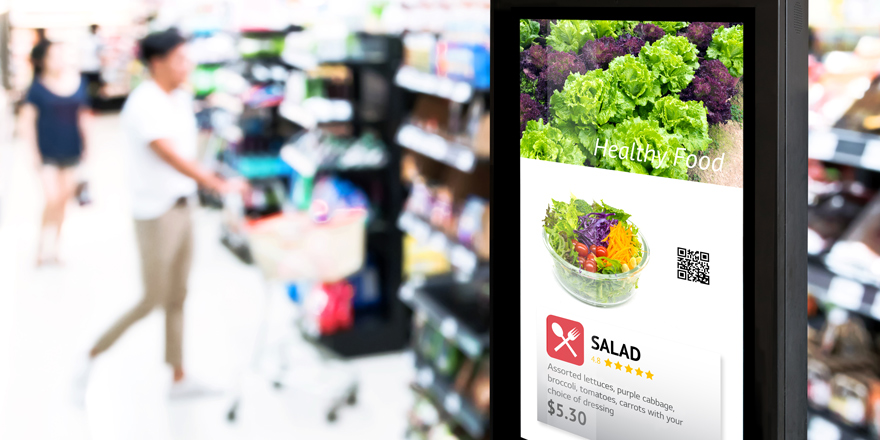Today is the last day of InfoComm 2019. If you didn’t attend the show, by now you’ve probably seen videos and heard about the incredible digital signage displays that commanded attention across the trade show floor. Innovative displays that were not even possible just a handful of years ago are now creating amazing environments to wow visitors and leave them with an unforgettable impression of the brand.
But today, we also don’t want to forget the power of small format digital signage displays and tablets. While the large format displays and video walls deliver the wow factor in spades, small displays tucked away in areas where one-on-one customer interaction is an advantage are seriously valuable to a business. They’re not beckoning people from across the floor, they’re communicating with people right where they are.
For many consumers, the smartphone has become a powerful information gathering and shopping tool. However, interactive and intuitive small format displays and tablets employed at the point-of-purchase can provide more knowledge, as well as more opportunities to buy. An engaged and knowledgeable customer is a powerful ally, and these displays can allow them to make even smarter buying decisions.
How? By enhancing personal interaction. With small format touch screen displays and tablets, key features, specs, promotions and suggested add-on products are easily and effectively communicated, and the ability to order food, get discount codes, and discover additional items can improve customer satisfaction and drive incremental sales. Fully engaged customers are apt to make more purchases, and be more loyal.
Loyal customers engaging with these displays are more likely to talk, blog, and tweet about their experiences and the products or services they purchase and use and, more importantly, where they got them. In addition, the wealth of consumer data gathered from device interaction can provide businesses with critical insights and the analytics necessary to stay ahead of the competition.
So, what kind of businesses can benefit from small format displays and tablets? Brick-and-mortar retail stores, QSR and fast casual restaurants, for a start.
In retail stores, small format displays with built-in Beacon technology can be used to track a person’s movement and display relevant products and offers, speed up check-out, and communicate additional, personalized messages that enhance customer engagement.
Small format displays can also be used to provide expanded selections, or an entire product assortment, in ‘endless aisles,’ allowing smaller merchants and service providers to compete with larger chains and online outlets without making large investments in real estate or inventory. Endless aisles make it easy for their customers to shop and compare products, and most importantly, they keep the sale in their store.
QSR and fast casual restaurants have placed tablets in the hands of their servers, improving order-taking accuracy and efficiency. They’ve also added small format displays to individual tables and used them in self-serve kiosks so diners can interact with the menu and place food orders. To reduce perceived wait times, small format displays can even feature infotainment – dynamic graphic content to inform and engage customers while they wait.
Other businesses that can benefit from small format displays are corporate offices, college campuses, student housing, public spaces, trade shows, the hospitality industry, major cruise lines, large venues, stadiums and events, and the healthcare industry. But that’s enough for another blog post. The bottom line is, small format displays are here to stay, and we’re expecting an upswing in their deployments as more and more businesses strive to offer better, more personalized customer experiences.
